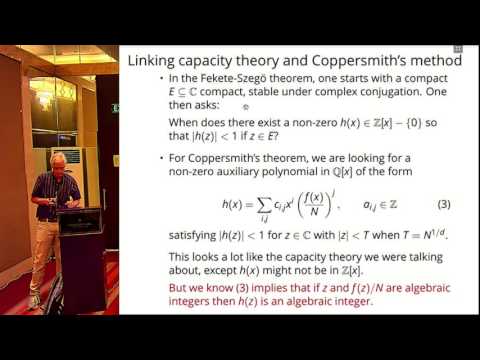Welcome to the resource topic for 2016/869
Title:
Cryptographic applications of capacity theory: On the optimality of Coppersmith’s method for univariate polynomials
Authors: Ted Chinburg, Brett Hemenway, Nadia Heninger, Zachary Scherr
Abstract:We draw a new connection between Coppersmith’s method for finding small solutions to polynomial congruences modulo integers and the capacity theory of adelic subsets of algebraic curves. Coppersmith’s method uses lattice basis reduction to construct an auxiliary polynomial that vanishes at the desired solutions. Capacity theory provides a toolkit for proving when polynomials with certain boundedness properties do or do not exist. Using capacity theory, we prove that Coppersmith’s bound for univariate polynomials is optimal in the sense that there are no auxiliary polynomials of the type he used that would allow finding roots of size N^{1/d+\epsilon} for any monic degree-d polynomial modulo N. Our results rule out the existence of polynomials of any degree and do not rely on lattice algorithms, thus eliminating the possibility of improvements for special cases or even superpolynomial-time improvements to Coppersmith’s bound. We extend this result to constructions of auxiliary polynomials using binomial polynomials, and rule out the existence of any auxiliary polynomial of this form that would find solutions of size N^{1/d+\epsilon} unless N has a very small prime factor.
ePrint: https://eprint.iacr.org/2016/869
Talk: https://www.youtube.com/watch?v=cBz0yPi7Bbo
Slides: https://iacr.org/cryptodb/archive/2016/ASIACRYPT/presentation/27869.pdf
See all topics related to this paper.
Feel free to post resources that are related to this paper below.
Example resources include: implementations, explanation materials, talks, slides, links to previous discussions on other websites.
For more information, see the rules for Resource Topics .
